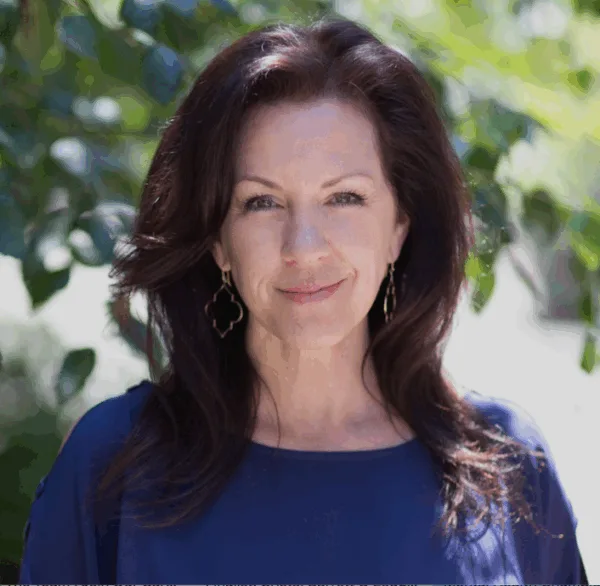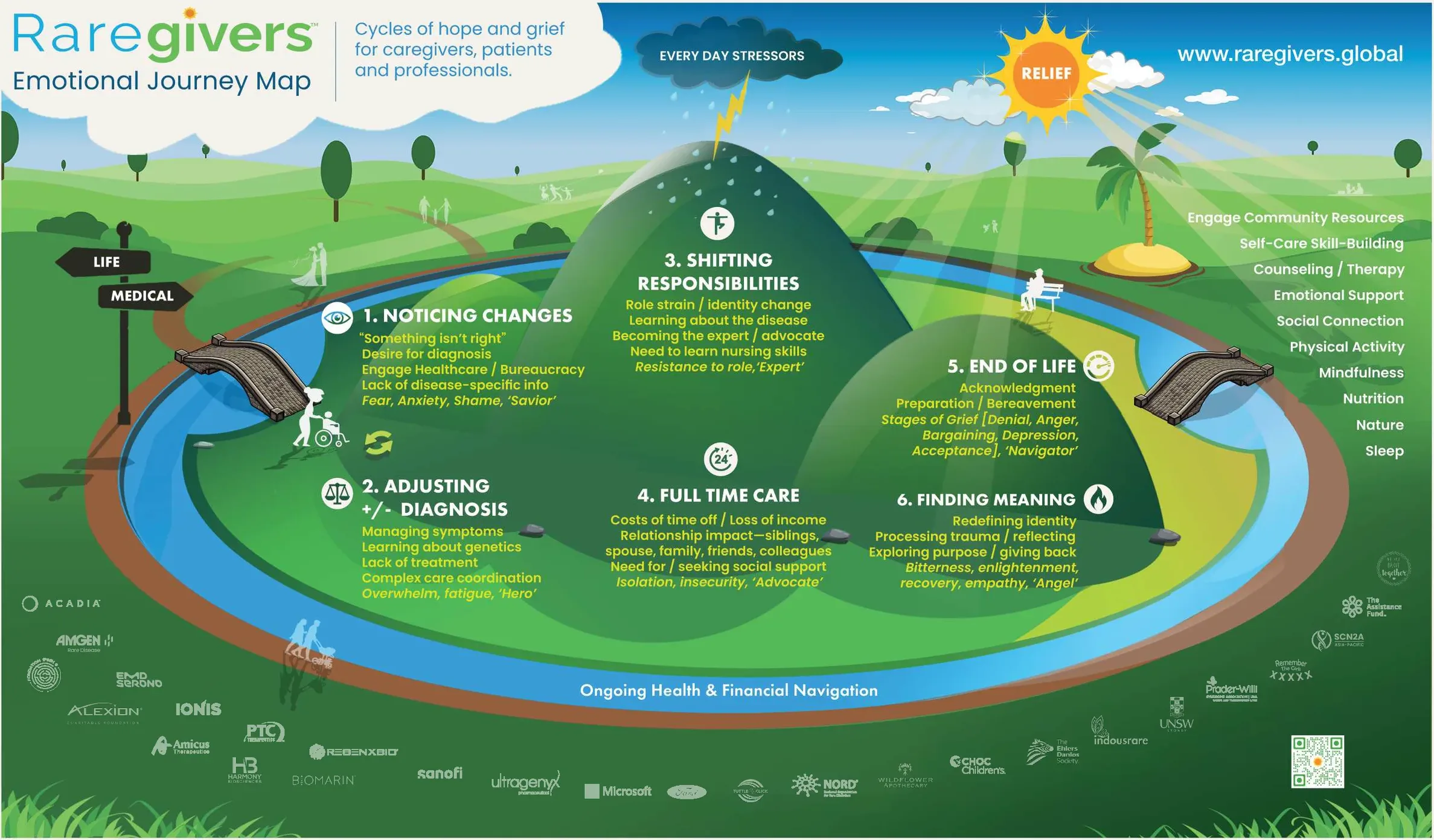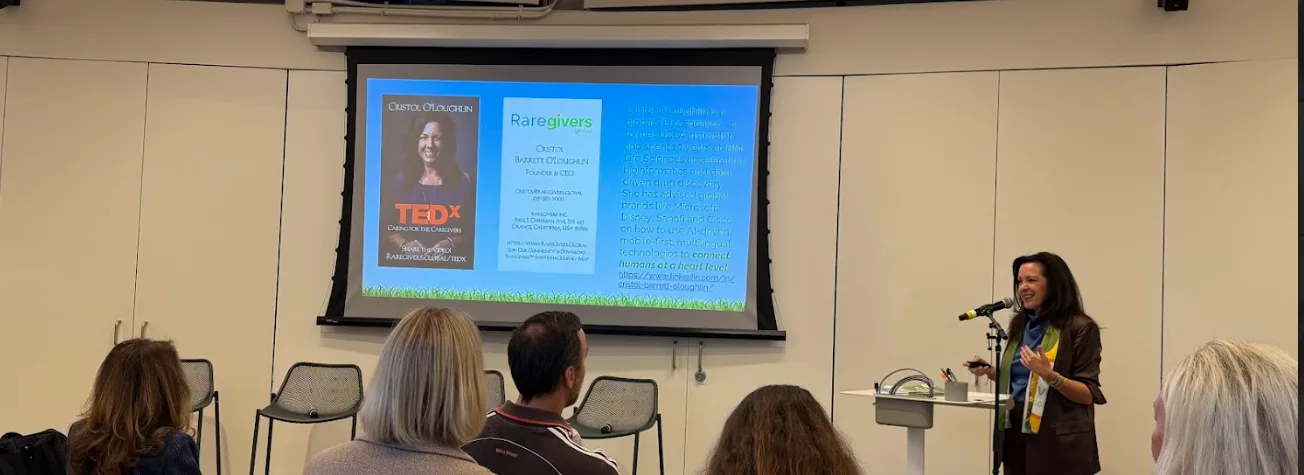Support for Extreme Caregiving – Cristol Barrett O’Loughlin

Raregivers Inc. is a global network providing mental health and wellness services to caregivers, patients and professionals in rare, chronic and complex disease communities.
I just want to say on behalf of all of the rare mothers, the rare families, young adults, and adult patients, their caregivers and the healthcare providers that are supporting them – Thank you for the work the scientific community is doing.
My talk is not about science, it’s about the heart. It’s about the emotional impact of waiting and living with the day-to-day realities in many families – unimaginable realities of care that our very brave families live with.
We are in a symbiotic relationship with each other, much like mitochondria is in a symbiotic relationship with the body. We’re all stakeholders in this experience but I’m coming at this conversation very differently. I am coming at this from a technology perspective as well as a marketing and communications perspective, and lived experience. So mashing that all together is what I find passion in, and that’s connecting humans at a heart level.
How Raregivers began
Today, we are going to talk about what Raregivers is and I’ll sprinkle in some of the data along the way.
In truth, this is a lived experience for my family – the Barrett family. I’m the youngest of five children. My mother, Phyllis did not know that she was a carrier of the Hunter Type 2 Syndrome: Mucopolysaccharidosis, a lysosomal storage disorder
I am also a carrier, as is my daughter – we have three generations of carriers in our family
My oldest brother Richard was the golden child – he was hitting the classic milestones just perfectly according to plan. But, my brothers David, Jared, and Randy had a harder time lifting their heads and crawling. Eventually they did gain the ability to walk and talk, but lost that ability over time. All of them were missing the enzyme they needed to break down certain types of glucose in their bodies.
As the youngest of the five of us, I was all ready to go off and do something about it. But, my brothers all did pass away in the 1980s. I have a deep history and love for UCLA because my brothers were seen here at UCLA by Dr. Elizabeth Newfeld. Elizabeth was also my genetic counselor when I was looking to start a family
At UCLA, it was the Pi Beta Phi sisters that helped me do what so many families do in the rare disease space, which is to start an effort to make money and fund research. We did what 20 year olds do best; we threw parties every year and raised a whole lot of money. And, we did fund a treatment for Hunter Syndrome that is now US FDA approved – young men who would have passed away in their teens are going off to college now
We weren’t the only ones to fund it, obviously, it was a group effort. But, we do a lot of advocacy for newborn screening so that those young men can get on that treatment as quickly as possible
As I was working at IBM on media and entertainment accounts, I always had it in my heart that I wanted to do more in the rare disease space. After I received a diagnosis of breast cancer, I realized my relationship with time had shifted – I may not get to retirement to do all that extra fundraising that I wanted to do later in life. So I set my corporate career aside and went full into how we were going to help the reality of these families.
Because 350 million families impacted by rare diseases and zero cures is a global mental health crisis. All those families had to be in emotional distress.
Radical caregiving
We wanted to do what we could to bring emotional relief into the family unit. There are best practices in the military and veterans caregiving, in senior care, Alzheimer’s, dementia care, in cancer care which involves the patient, their primary care unit, their care partners, and the healthcare partner ecosystem.
So, how do you affect systemic change on a global basis for 350 million people?
Some say that it is actually 2.8 billion because we know we have three primary caregivers and five healthcare professionals for each patient. We’ve got a big chunk of the planet that’s really emotionally impacted – how do you bring relief into a very complicated system of support?
Good news. We know how to do that at big companies like IBM and through entertainment entities like the Walt Disney Company. What we’re doing is we’re bringing the best practices of emotional connectedness into this system.
We say this isn’t just caregiving, it’s radical caregiving. This is 24/7.
Rare caregiving is a societal challenge
Medical management, financial hardship, people coming out of their careers, the isolation that comes into the care cycle, and really having to step away from their careers. We’re still seeing the downstream impacts of this experience within rare, chronic, and complex diseases.
We very much view rare caregiving as a societal challenge; our answer to the rare caregivers is Complex Care.
When life gets medical, people get emotional, but we do have a bias towards fixing or solving the challenge.
My request to the scientists is to please keep doing the work you’re doing because in our lifetime, we will see the treatments and the cures. We’re already seeing nutraceuticals and other interventions.
We don’t have to wait for FDA approval on everything. We can use our ancient wisdom. I remember my mother with her vitamix in the kitchen just juicing every day to bring relief to my brothers. There’s so much we can do with our ancient wisdom, but when life gets medical, people get emotional. And, if we ignore the emotions, we’re in trouble. Caregivers, in particular, are in trouble.
Raregiver’s™ Emotional Journey Map
We developed the Raregiver’s™ Emotional Journey Map based on 287 pieces of published research on the emotional impact on rare, chronic, and complex disease families plus a meta study followed by 21 cohorts of individual groups who have gone through our training.

What wasn’t in the initial data was end-of-life and finding meaning. This is because when a patient passes away, their relationship with the healthcare system ends. Hence, the data on the downstream impact of the grief cycles on the family was missing. It was the families that brought up the fact the data was missing this part of the cycle.
The Map shows that when life gets medical, you get thrust onto this island. This is very isolating and you don’t have a roadmap to your feelings plus this is not a linear journey.
You can be in a diagnostic phase adjusting to a diagnosis with, or without, a diagnosis. On average, it takes seven to eight years to get an accurate diagnosis, with families being misdiagnosed three times. You can be in a diagnostic phase and end up in the Emergency Room and be worried about the end of life. And then go back into a bit of homeostasis, but still be grieving what you thought life was going to look like, or what you thought your role looked like as a mother or father.
Or, what you thought about how your child’s life was going to progress.
These are cycles of hope and grief.
Our superpower is empathy and love, and we have the capacity to hold both at the same time. The joy and the pain, the dark and the light.
The journey map is designed to be a talking tool.
We’re not trying to fix anything. We’re not trying to progress people from crisis to wellness.
What we’re trying to do is provide a system of support where people can talk about their feelings and how to get off the island.
Watch the video to learn more.
More Resources
- Read an article about the event: Mitochondria Talks – Healthspan, Aging, & Neurodegenerative Disorders
- Learn how the San Diego Mito Moms community raises funds to support cutting-edge pediatric mitochondrial research at the UCSD Metabolic and Mitochondrial Disease Clinic: Laugh for Mito Gala – San Diego 2025



